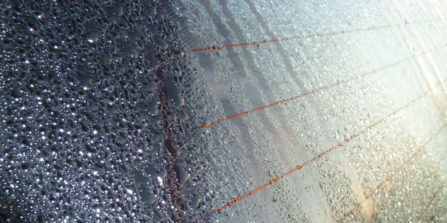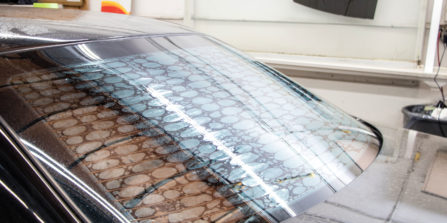
Protect Your Skin While Driving
The glass that came with your vehicle does nothing to protect you from the sun’s harmful rays. Read here to learn how to protect yourself, and all the other occupants of your vehicle, from dangerous exposure to UV radiation.
Everyone knows to apply sunscreen when engaging in outdoor activities, such as going to the lake or out for a hike. However, many people are unaware of how vulnerable they are to the harmful effects of the sun’s radiation while driving or riding in their car. In fact, driving to and from the outdoor activities we love can be more harmful to our skin than the activities themselves. Especially this year, when us Torontonians are dealing with record-breaking heat and UV indexes, it is important to make sure you are safe.
According to the Canadian Cancer Society, sun exposure is the primary cause of skin cancer for Canadians. There are two main types of the sun’s rays that damage our skin. Short-wavelength UVB rays cause most of the surface damage to our skin, such as sunburns, while long-wavelength UVA rays penetrate deeper. The glass that came with your vehicle blocks the short-wavelength UVB rays, which is why most people won’t get sunburns while sitting in a car with the windows up, however, the glass offers little protection against harmful long-wavelength UVA rays. Typically, front windshields are treated by the manufacturer to block UVA rays, but the untreated side and rear windows leave passengers unknowingly vulnerable.
The damage caused by exposure to UVB and UVA rays accumulates over time, which means it is important to protect yourself as much as possible. A recent study from the Journal of the American Academy of Dermatology observed a higher incidence of skin cancer on the left side (drivers’ side) of patients. Strikingly, countries in which the driver sits on the right side of the car have found that the majority of patients with skin cancer developed it on their right sides. This strongly indicates that the sun exposure that accumulates while we are driving is a major contributing factor to skin cancer.
Automotive window tint provides effective protection from both UVA and UVB rays, as well as mitigating the effects of road glare and protecting the interior of your car. Window tint blocks more than 99% of UVA and UVB rays, which is why it is recommended by the Skin Cancer Foundation as a protective measure against skin cancer. Regulations about window tint vary by province, so make sure to consult with an experienced professional to get the right window tint for you. We are always happy to answer questions about driver and passenger safety, so don’t hesitate to give us a shout.





